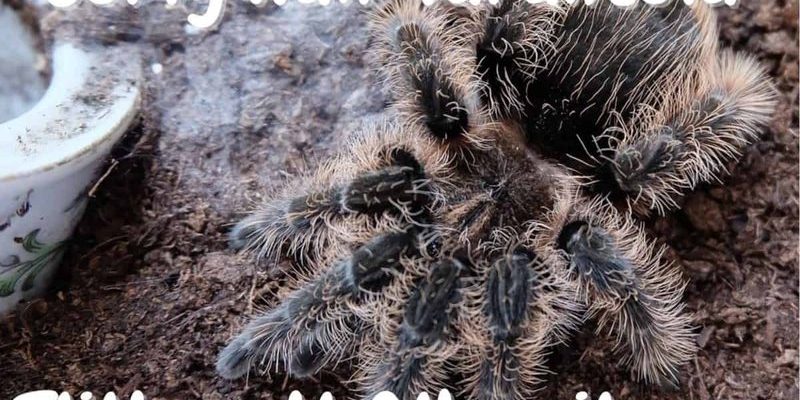
Identifying a Curly Hair Tarantula isn’t just about spotting a spider; it’s about appreciating the little quirks that make them unique. Think of them as the “rock stars” of the arachnid world. They have a distinctive look characterized by their curly hair, which gives them their name. Let’s dive into how you can spot one of these fascinating spiders and what you need to know to differentiate them from other tarantulas.
Physical Characteristics of Curly Hair Tarantulas
Curly Hair Tarantulas belong to the genus *Brachypelma*, and they’re primarily found in Central America. When you’re trying to identify one, the first thing you’ll notice is their curly, fuzzy appearance. This hair isn’t just for show—it helps them with insulation and camouflage in their natural habitat.
To break it down, here are some key physical traits to look for:
- Coloration: Most Curly Hair Tarantulas have a mix of brown, black, and shades of gold. Their coloration can vary depending on their age and gender.
- Size: As adults, these tarantulas generally measure around 4 to 6 inches across. Males tend to be smaller than females.
- Leg Hair: Their legs are covered in these curly hairs that can make them look fluffy. This is one of the easiest ways to differentiate them from other tarantulas!
When you spot one of these beauties, their fuzzy body and legs can make them seem more approachable. Honestly, how many spiders do you know that could be described as “cute”?
Behavior and Temperament
So, you might be wondering, “Are they dangerous?” The good news is that Curly Hair Tarantulas are generally known for their calm and docile nature. Unlike some of their more aggressive cousins, these tarantulas are often the “gentle giants” of the spider world.
– Temperament: They are not prone to aggression and will usually retreat if they feel threatened. This makes them a popular choice for beginners who want to keep tarantulas as pets.
– Habitat: In the wild, these tarantulas prefer to hide in burrows or under rocks and vegetation. In captivity, they need similar conditions to feel secure.
– Activity Level: Curly Hair Tarantulas are mostly nocturnal. They like to come out at night to explore, which is when you might notice them being more active.
Understanding their behavior is crucial, especially if you’re considering having one as a pet. You might find yourself amazed at how much personality these little creatures can show!
Differences Between Male and Female Curly Hair Tarantulas
A neat aspect of Curly Hair Tarantulas is the clear differences between males and females. Here’s how you can tell them apart:
Size and Appearance
– Females: Generally larger and bulkier, females can live up to 20 years in captivity. Their bodies are more robust and they tend to have thicker legs.
– Males: Males mature faster and live shorter lives, usually around 5 to 10 years. You’ll notice males are smaller with longer legs, which helps them in their search for a mate.
Behavioral Differences
– Mating Rituals: During mating season, males will often wander around more in search of females. This behavior can make them look a bit more active than females.
These differences can be quite fascinating to observe, especially if you’re raising more than one tarantula. Pay close attention, and you’ll be able to spot these traits easily.
Preferred Habitat and Care in Captivity
If you’re thinking about keeping a Curly Hair Tarantula, it helps to know what they need to thrive. Creating the right habitat is essential, resembling their natural environment as closely as possible.
– Enclosure Size: A terrarium that gives them enough room to roam is ideal. Typically, a 10-gallon tank works well for adults.
– Substrate: Use a substrate like coconut fiber or peat moss. This material allows them to burrow, which is a natural behavior.
– Humidity and Temperature: Keep the humidity around 60-70% and the temperature between 75°F to 85°F. This range mimics their tropical home in Central America.
By setting up a proper habitat, you ensure that your Curly Hair Tarantula feels safe and secure, leading to a happier, healthier pet.
Common Health Concerns
Just like any pet, Curly Hair Tarantulas can face health issues. Being aware of these can help you catch problems early. Here are some common concerns:
– Molt Problems: Tarantulas outgrow their exoskeletons and need to molt regularly. Sometimes, they can get stuck during this process, leading to severe issues. Keeping track of their molting schedule is crucial.
– Respiratory Issues: Poor air quality can lead to respiratory problems. Ensure their enclosure is well-ventilated.
– Obesity: Overfeeding can lead to obesity, which can shorten their lifespan. Monitor their feeding schedule and portion sizes.
By being proactive about their health, you can help your Curly Hair Tarantula live a long and happy life.
Identifying a Curly Hair Tarantula might seem daunting at first, but with some close observation and knowledge of their characteristics, you’ll be a pro in no time. From their fuzzy legs to their gentle nature, these tarantulas have so much to offer both pet owners and curious observers.
Whether you’re contemplating welcoming one into your home or just want to appreciate them from afar, they’re truly captivating creatures. Each Curly Hair Tarantula has its own personality, quirks, and charm that makes them a wonderful part of the arachnid family. Happy observing!

